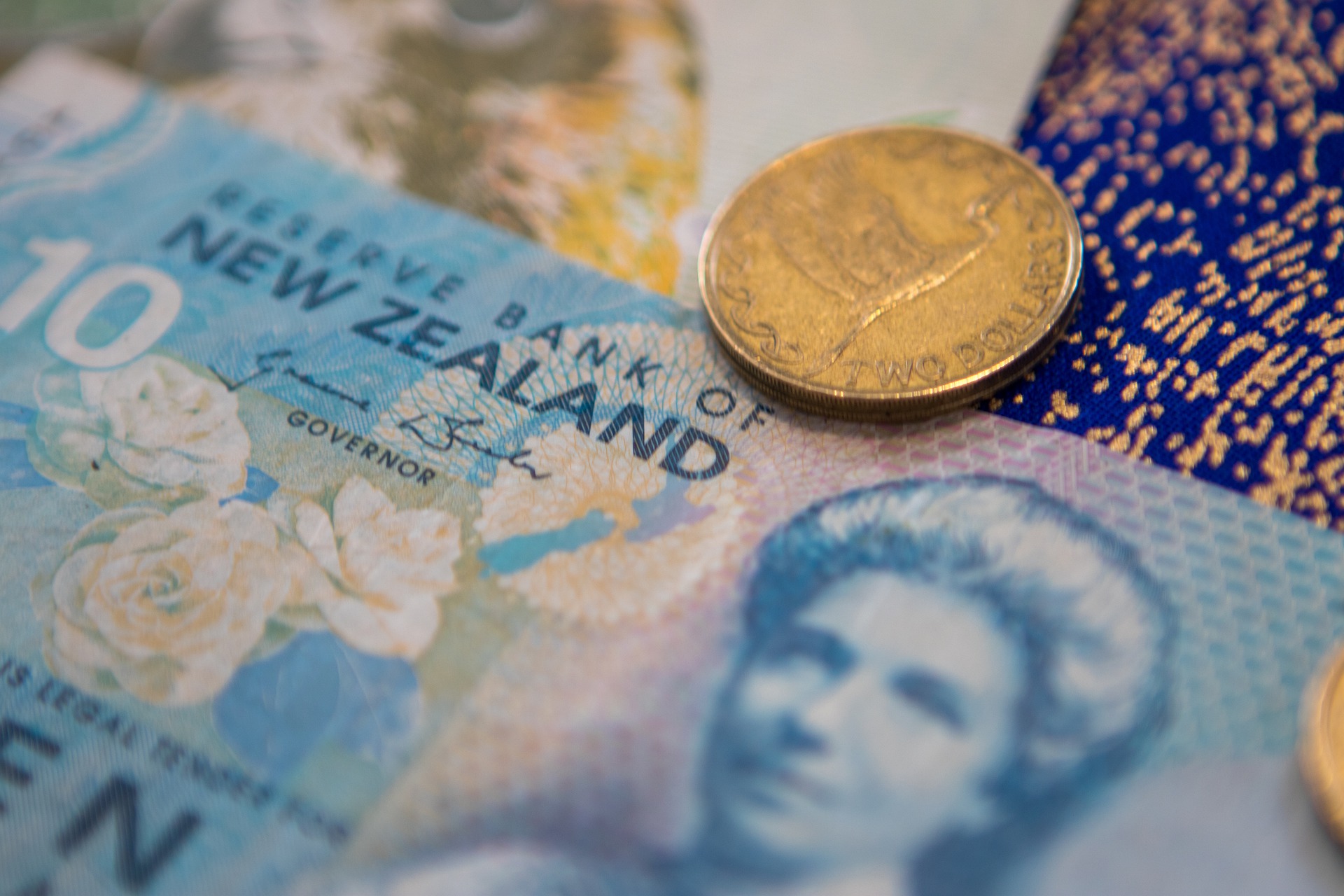NZ Dollar to US Dollar inched higher to the multi-month highs at 0.7219 before moving lower last week to close at 0.7153 on Friday, October 22, 2021.

NZ Dollar to US Dollar at Key Support at 0.7153
The NZ Dollar to US Dollar zoomed higher to 0.7219 levels, the highest in October. However, the currency exchange rate of the NZD/USD pair slipped marginally to 0.7153 levels at close on Friday, October 22.
The New Zealand Dollar to US Dollar currency pair saw a sharp surge from 0.6859 in the first week of October 2021 to 0.7219 on October 21. The currency pair moved with positive traction in October with a 5.2% bull run. However, it turned negative last week to close in the red on October 22, Friday.
The foreign currency exchange of the NZ Dollar to US Dollar has strong support at the SMA 200 at 0.7101 levels. It was trading at 0.7160 levels in September previously. A breach above the 0.7200 levels will take it to multi-month highs.
Business Confidence Drops with Lockdown in Auckland
New Zealand business confidence dropped from 7 in the second quarter to -11 in the third quarter. The lockdown in the country hurts business confidence. The New Zealand Institute of Economic Research states that general business conditions continue to deteriorate with lockdown in Auckland. The latest covid outbreak is hurting confidence, says the report.
Prelim ANZ business confidence dropped from -7.2 in September to -8.6% in October 2021. Inflation remains above 3%. Cost pressure is high, while ease of credit is weaker.
ANZ commodity prices m/m improved from -1.6% to 1.5% in September. Dairy and forestry regained ground. Consumer Price Index in New Zealand for the third quarter is at 2.2%.
GDT price index surged from 0.0% to 2.2%. The index reflects the change in dairy product prices in New Zealand. It is said to be the leading indicator of the trade balance in New Zealand, as increasing prices show that income from exports is improving.
Reports say that new infections are rising in Auckland, the largest city in New Zealand. Auckland is in fresh lockdown after more than two months. Prime Minister Jacinda Ardern says that the country requires at least 90% vaccination to restore freedom. As of October 2021, 70% of the population received inoculation. Public health is improving with the vaccination rate increasing.
The economy will improve faster with health conditions improving, say officials. The corona scare has to come down to revive the economy. The NZ Dollar to US Dollar improves when the economy shows improvement.
New Zealand Hikes Rates
The RBNZ hiked rates in October and hints that more tightening of policy may come. It has set the inflation target at the 1% to 3% range. Higher interest rates are positive indications for the New Zealand Dollar as it attracts foreign investment.
The official cash rate rose higher from 0.25% to 0.5%. It is the first time that the country has had rate hikes since June 2014. Rate hikes bring down inflation and support employment. Inflation may rise to 4% before it decreases to 2%, say experts. High oil prices, increasing transport cost and shortfall in supply causes inflation in New Zealand. A balance between inflation and interest rates will improve economic growth in the country.
The rate hike keeps New Zealand ahead of other countries. Countries such as South Korea and Norway were other countries that hiked increased rates even earlier.
As the economy rebounds, the country may bring down stimulus measures. It will bring down inflation and create more employment opportunities. Inflation has to come down to lower the price of goods and services. Inflation reacts negatively on the NZ Dollar to US Dollar.
The business manufacturing index has become better from 39.7 to 51.4 in September 2021. New orders are back to normal. However, the production index is flat at 49.9, and inventory is at 50.1.
CPI q/q is at 1.3% to 2.2%. The consumer price index in New Zealand has come up from1082 points in the second quarter to 1106 points in the third quarter of 2021.
Credit card spending y/y has risen higher from -6.9% to -12.9%. As it correlates with consumer confidence and spending, a lower rate is bearish for the New Zealand Dollar.
AUD/NZD is trending lower towards the 1.04 levels. Australia is the nearest trading partner to New Zealand.
Once covid cases come under control, the country will show rapid growth towards the pre-pandemic levels, say experts.
US Dollar Index
The US Dollar index saw a negative move last week. It has come down from the 94.00 levels in the forex market. The USD index closed at 93.58 last week. The debt ceiling controversy and trade conflicts with China are some causes of worry in the United States.
The Benchmark yield was at 6.36%. Brent crude is trading around the $85 level, at multi-year highs with a bullish sentiment. Lower supplies and high demand pushes crude prices higher. US Treasury yield was close to the 1.7% mark.